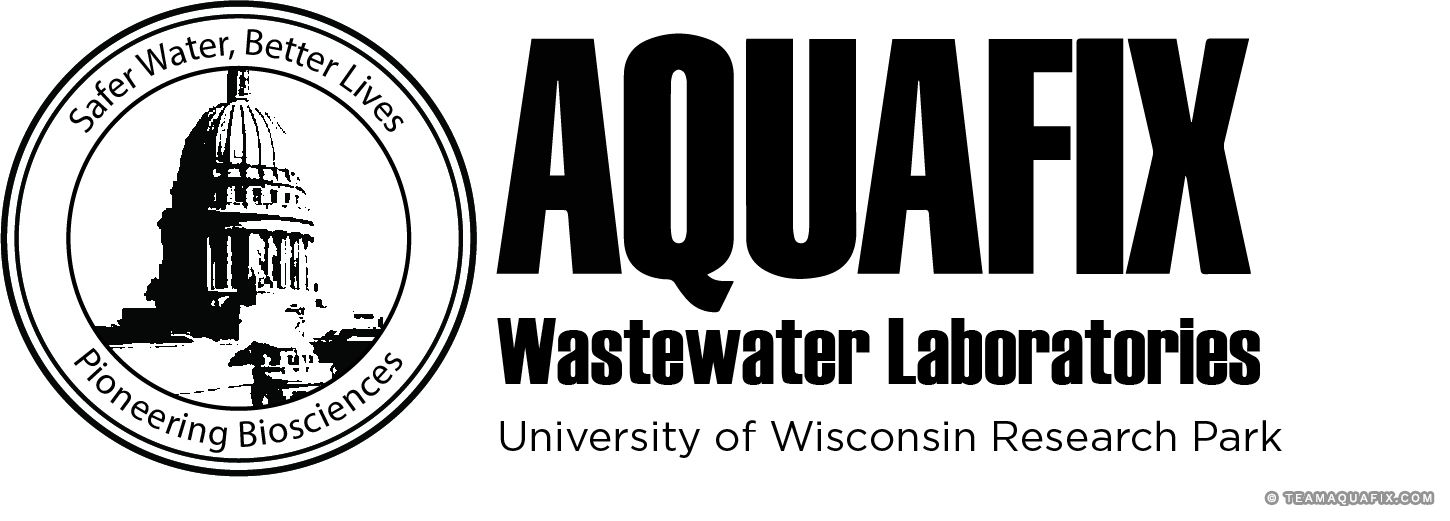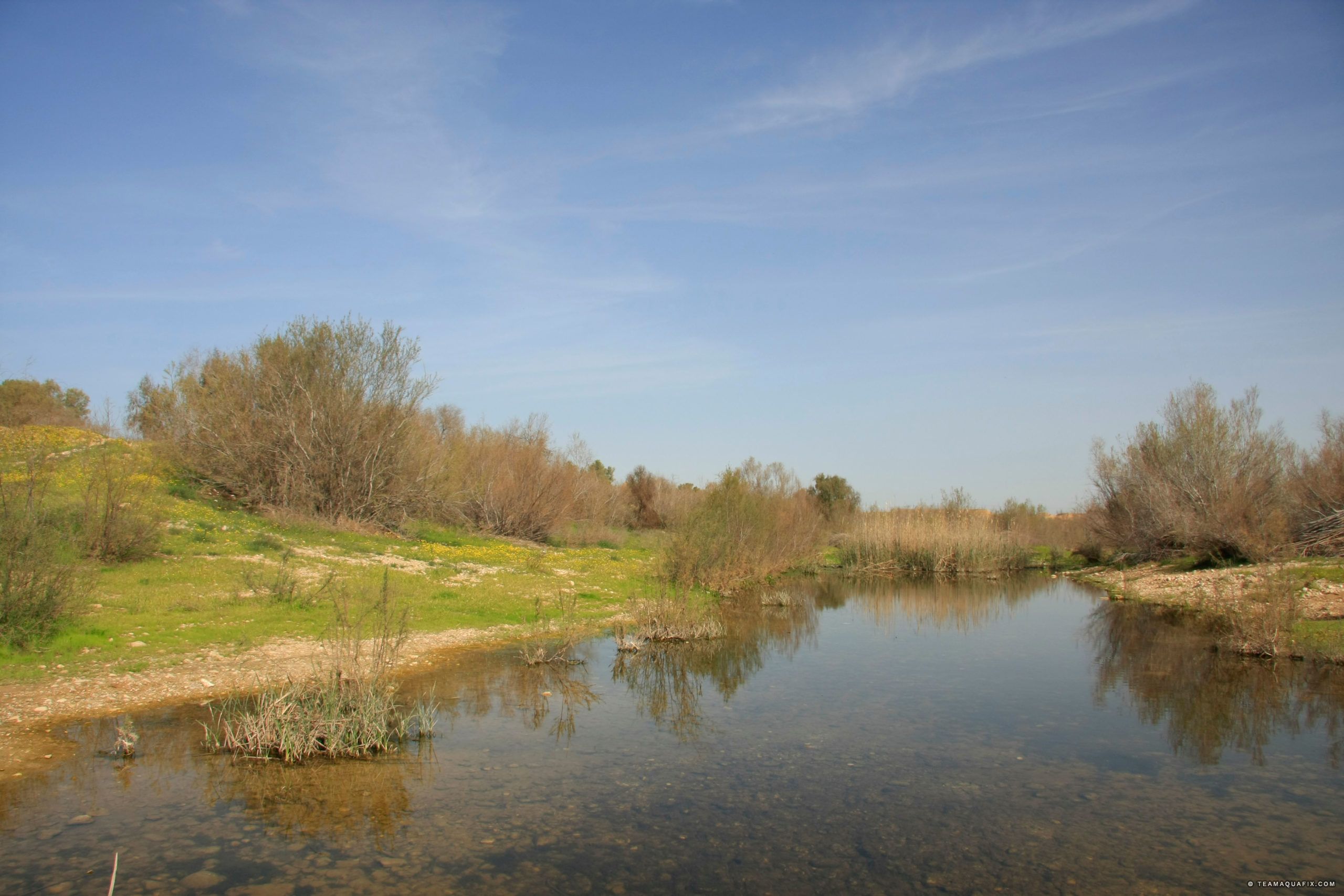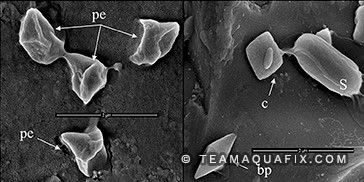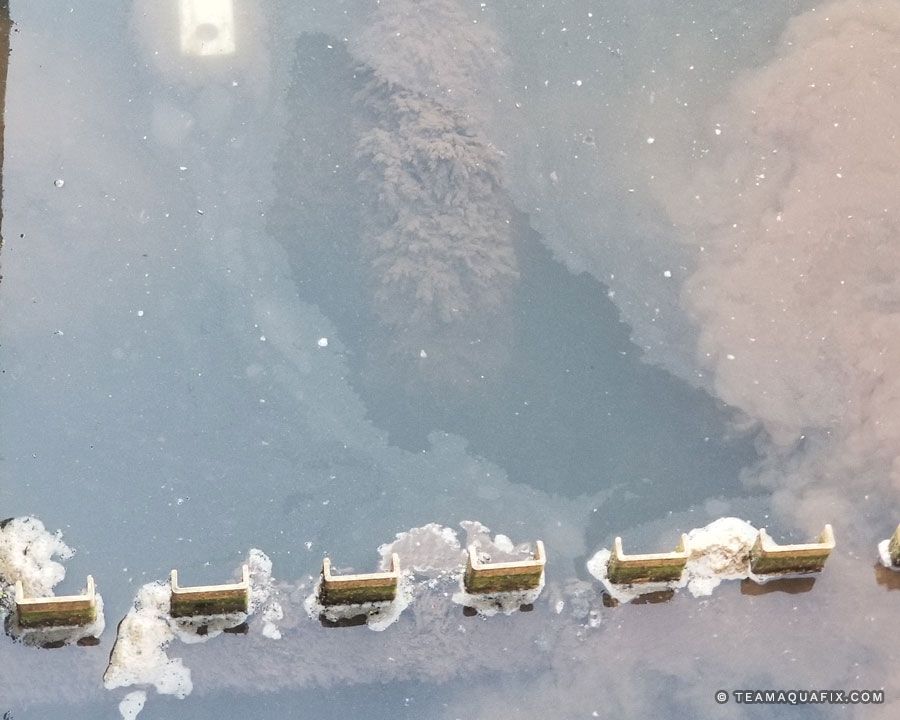
Bti Endotoxin Study
by Natalie Walton of Aquafix Laboratories
Bacillus thuringiensis
Aquafix’s AQUABACxt contains Bacillus thuringiensis subsp. israelensis ( Bti ), a naturally occurring biological larvicide. This paper will discuss what Bti is and how it works.
Bti was first discovered at a mosquito breeding ground in 1976 from the soil of a stagnant pond located in the Nahal Besor Desert River Basin of Israel (Barjac & Sutherland, 1990). The following year, Bti was discovered to be an extremely effective larvicide to mosquitoes and black flies (Barjac & Sutherland, 1990) due to the insects’ ability to activate the release of Bti toxins
Figure 1.
Nahal Besor Desert River basin of Israel

In wastewater, Bti was discovered to be effective against red worms/midge flies and bristle worms. The discovery of Bti and its capabilities is important not only due to its pest control properties, but because it poses less of a threat to non-target species, such as humans, fish, and birds in comparison to chemical larvicides, such as Methoprene.
Bti , when in its spore-forming stage, produces a protein crystal, or a parasporal body. This parasporal body consists of six δ-endotoxins. These six δ-endotoxins consist of four major polypeptides and at least two minor ones (BenDov, 2014). Each of these toxins have been isolated and individually compared to the potency of the entire parasporal body; None were as toxic as the entire body (Hughes et. al., 2004).
Figure 2.
Scanning electron microscopy photo of Bti crystals (Nair et. al., 2018)

When target species consume Bti , the δ-endotoxins bind to epithelial cells within their stomach lining where the internal stomach alkalinity activates the parasporal body toxins. The toxins are then released, causing the stomach to swell and burst. This leads to starvation followed by death.
Unlike target species, humans have an acidic stomach, therefore do not have the ability to activate the secretion of Bti toxins (Canadian Government, 2011). Due to this difference, Bti
is not toxic to humans. However, Bti should still be handled with gloves and googles due to the potential risk of eye and skin irritation. Further research also has shown Bti to be non-toxic to other mammals. Mammals are not the only nontarget species researched. A study conducted in Florida using golf course ponds showed that Bti
had no negative effect on microorganisms, such as daphnia and rotifers (Ali, 1981). The same cannot be said for non-target species when chemical larvicides, such as Methoprene, are used.
The most common alternative to Bti treatment for wastewater midge larvae is a chemical larvicide, specifically Methoprene. Methoprene utilizes a different control mechanism and can have more adverse side effects compared to Bti . Methoprene works by acting as an artificial hormone regulator; This hormone regulator disrupts the life cycle by preventing adulthood from being reached (National Pesticide Information Center, 2012). If insects are unable to reach adult age, they are unable to reproduce, therefore controlling the population.
Even though Methoprene works as a hormone regulator, it can be toxic to non-target species, such as some fish and crustaceans (National Pesticide Information Center, 2012). Methoprene also differs from Bti as it has been proven resistance to Methoprene can occur (Huffaker et. al., 1976).
The chance of target species developing a resistance to Bti is very low (Land et. al. 2019). For nearly 35 years, resistance to Bti has been extensively researched in the field with no signs of occurring (Ben-Dov, 2014). It is theorized that due to their different modes of action and synergism with each other the four major toxins are considered to be why resistance to Bti does not occur (Ben-Dov, 2014). The improbability of target species gaining resistance to Bti is just one of the many reasons it is becoming a more widespread and favorable larvicide.
AQUABACxt and Lar-V-Zyme
Many operators prefer to use AQUABACxt with Lar-V-Zyme. This is because Lar-V-Zyme degrades the cocoons that protect the red worms. Cocoons are made of TSS and undigested BOD which includes F.O.G. and plant and paper fibers. Lar-V-Zyme degrades these cocoons, making the red worms more suspectable to be killed by AQUABACxt. Cocoons are seen on the weirs in the clarifiers and are also present in the return lines.
At Aquafix, we pride ourselves in being environmentally friendly with all our products. This is why Aquafix chose Bacillus thuringiensis subsp. israelensis to be in our EPA-registered product, AQUABACxt.
Figure 3.
Red worm cocoons coating a clarifier rake

